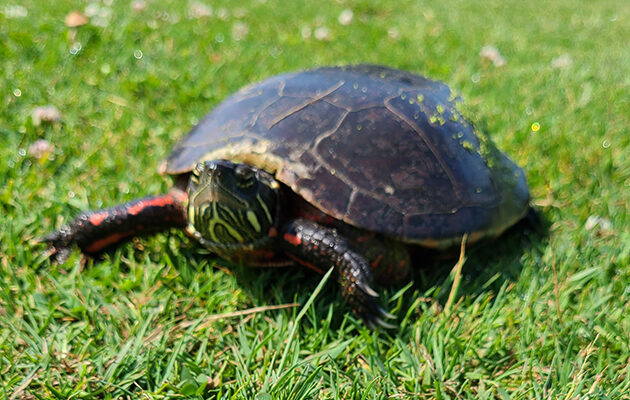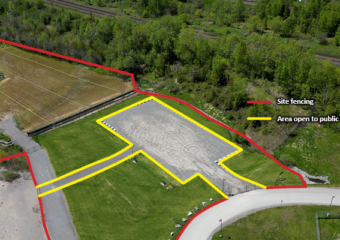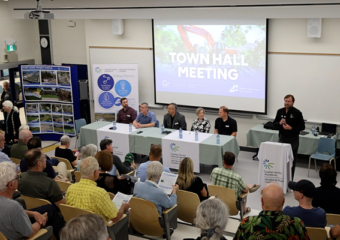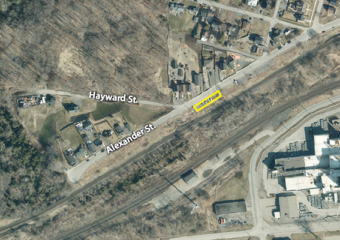Port Hope Area Initiative (PHAI) work continues at the Chemetron Lagoon in Port Hope. The lagoon is currently being de-watered to facilitate access to remove the contaminated sludge laying at the bottom. During the dewatering process, CNL staff and contractors have found and relocated wildlife, mostly turtles. When turtles or other animals are discovered on a PHAI site they are usually left undisturbed, and their habitat avoided, or in cases where this is not feasible, the animal is relocated with the assistance of the environmental services team.
Turtles found in the Chemetron Lagoon were gently cleaned to remove any contaminated sediment and then relocated by hand to the nearby Sculthorpe Marsh. Two different species of turtles were relocated: – the painted turtle and snapping turtle.
Painted turtles usually inhabit lakes, ponds, rivers, streams and wetlands in Ontario. These turtles love the sun and are an aquatic species that only comes to land for nesting and migration. Snapping turtles are habitat generalists so they are not negatively affected, like other species at risk might be, when their habitat is impacted. Snapping turtles can live a very long time in the wild – up to 70 years – but they have a slow reproduction rate which makes the species more vulnerable to threats such as road mortality, hunting and poaching.
Learn more about PHAI’s species at risk, including the snapping turtle and Blanding’s turtle on our website; https://www.phai.ca/environmental-protection/species-at-risk/
Industrial waste at the Chemetron Lagoon site is being cleaned up as part of the PHAI, on behalf of Atomic Energy of Canada Limited, the Crown corporation responsible for fulfilling Canada’s commitment under the Legal Agreement. CNL is committed to completing this community-requested cleanup safely while meeting regulatory requirements.




